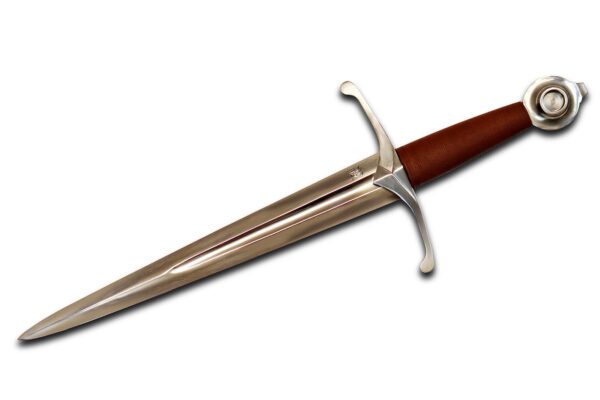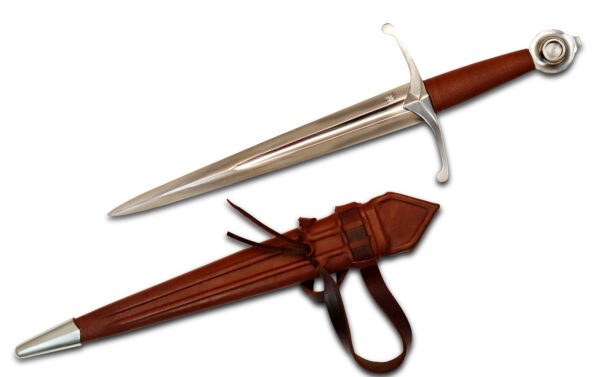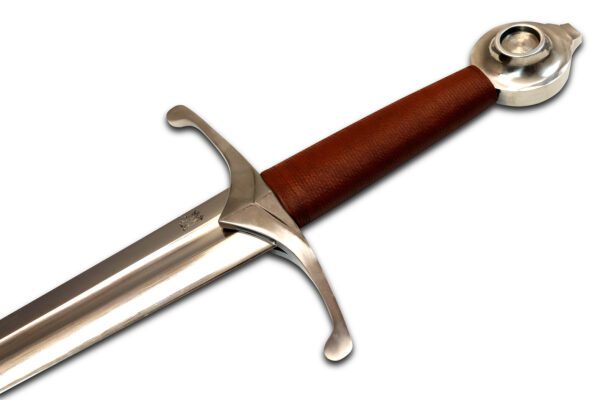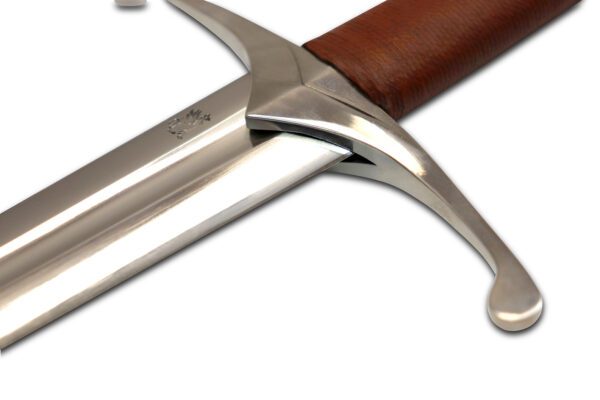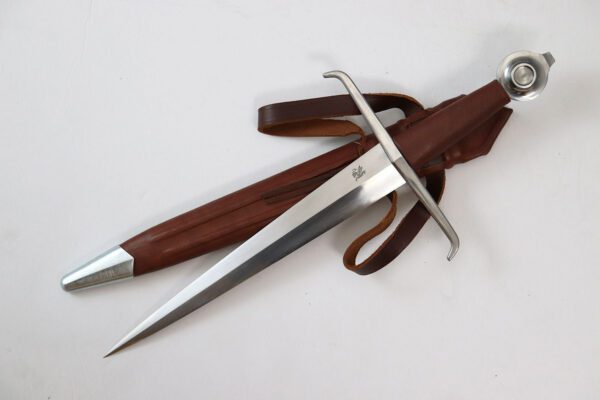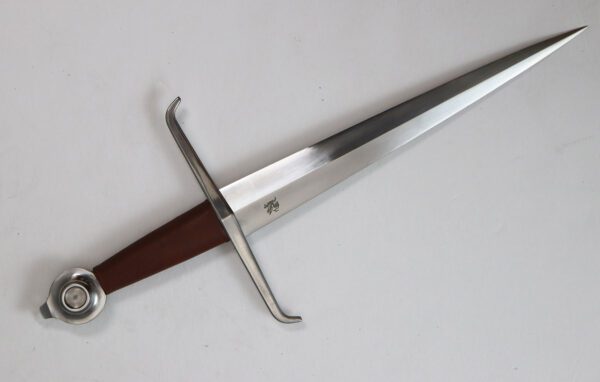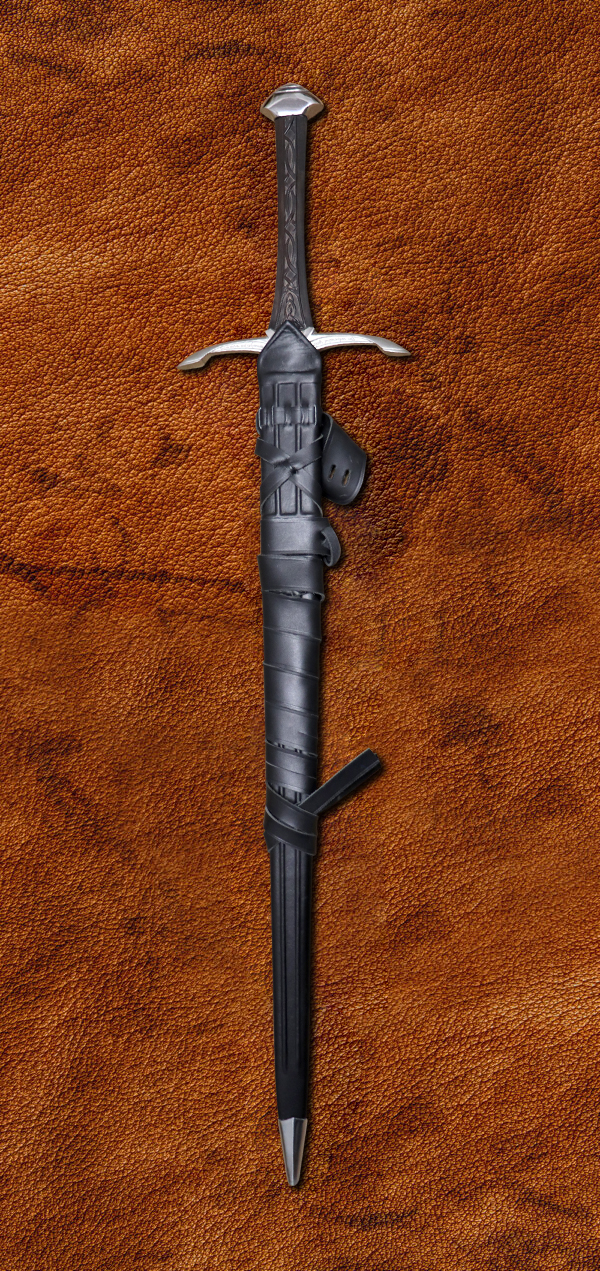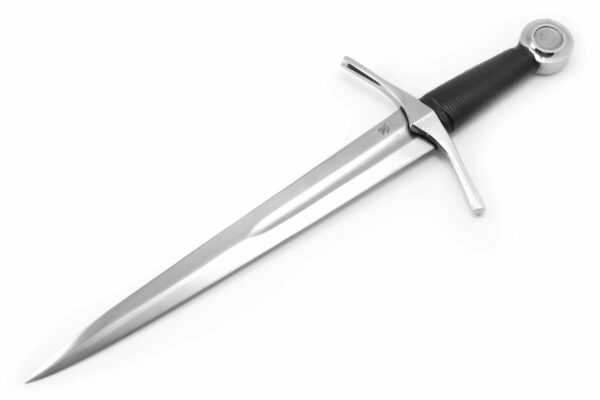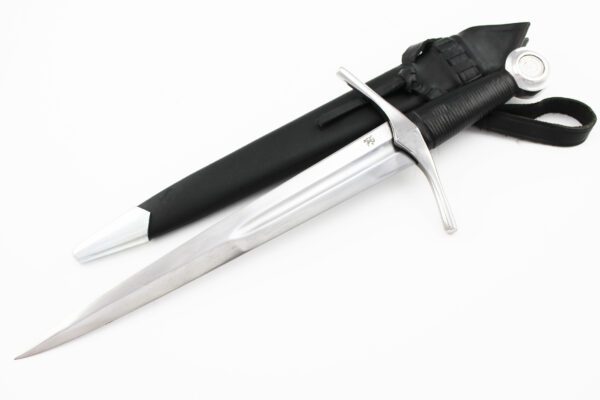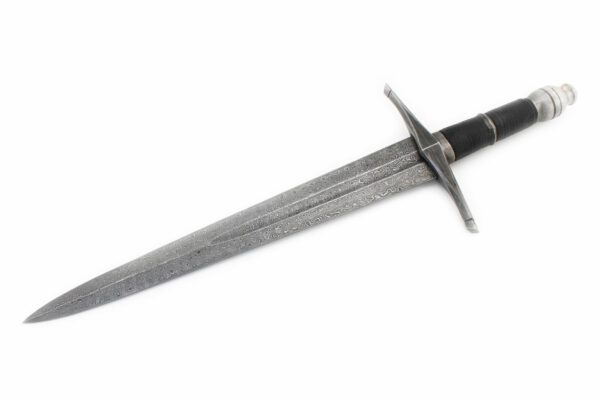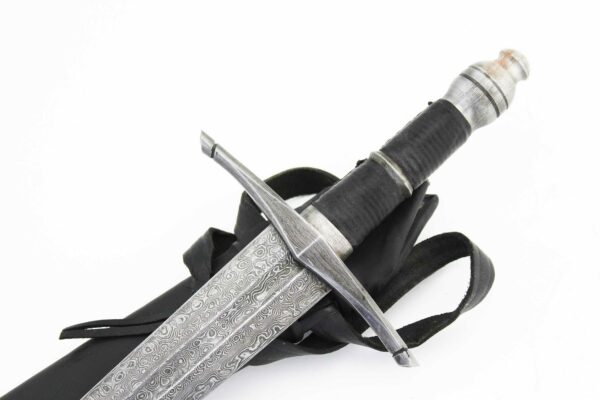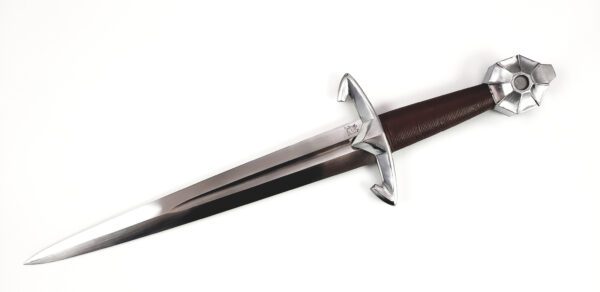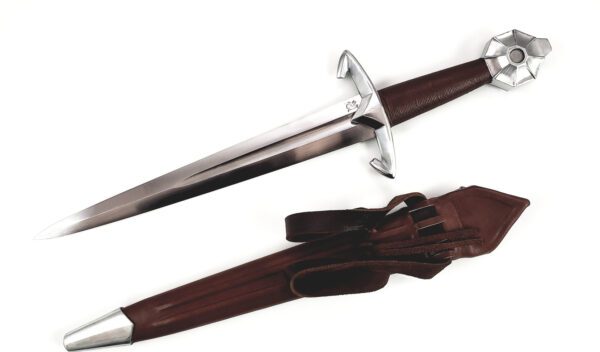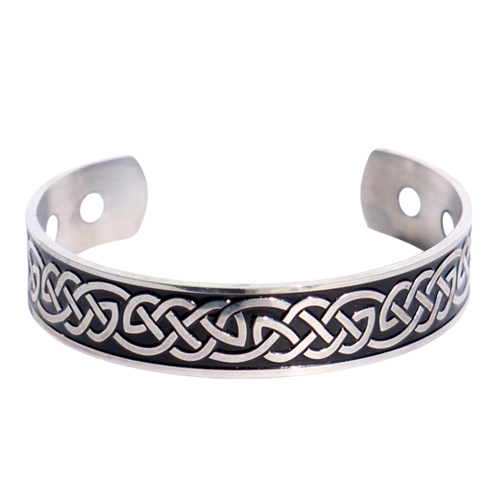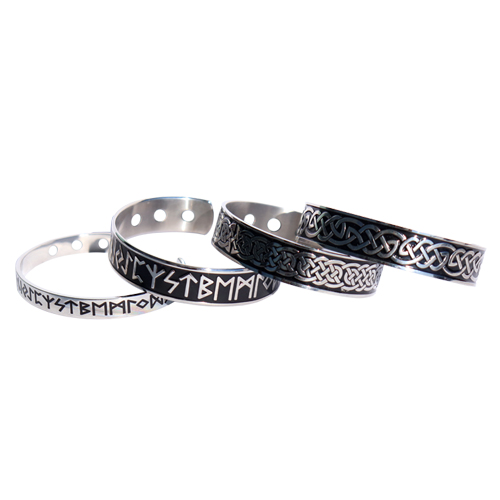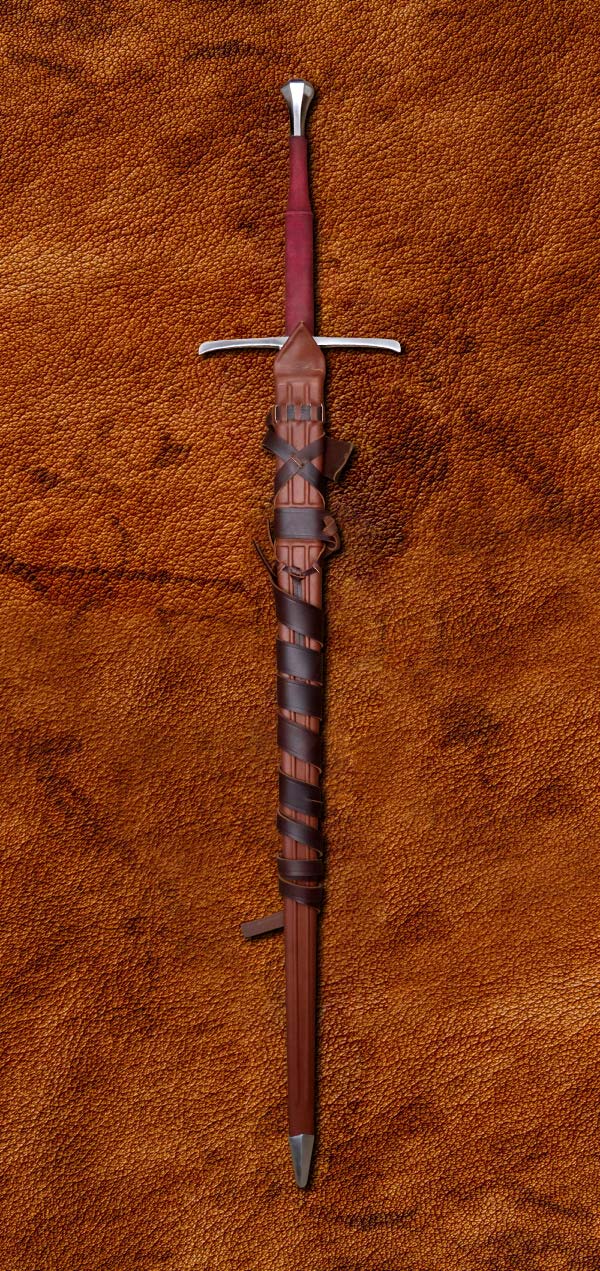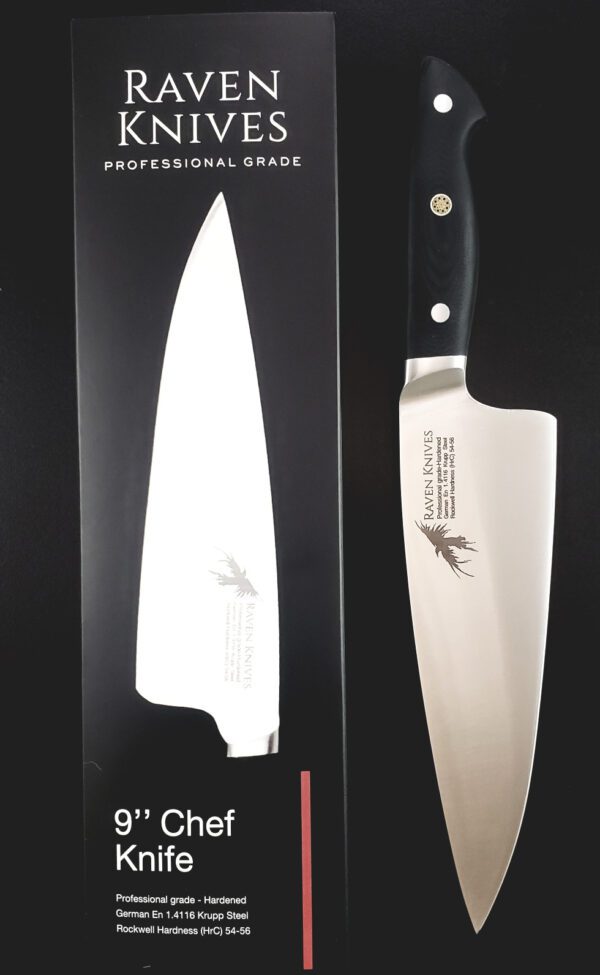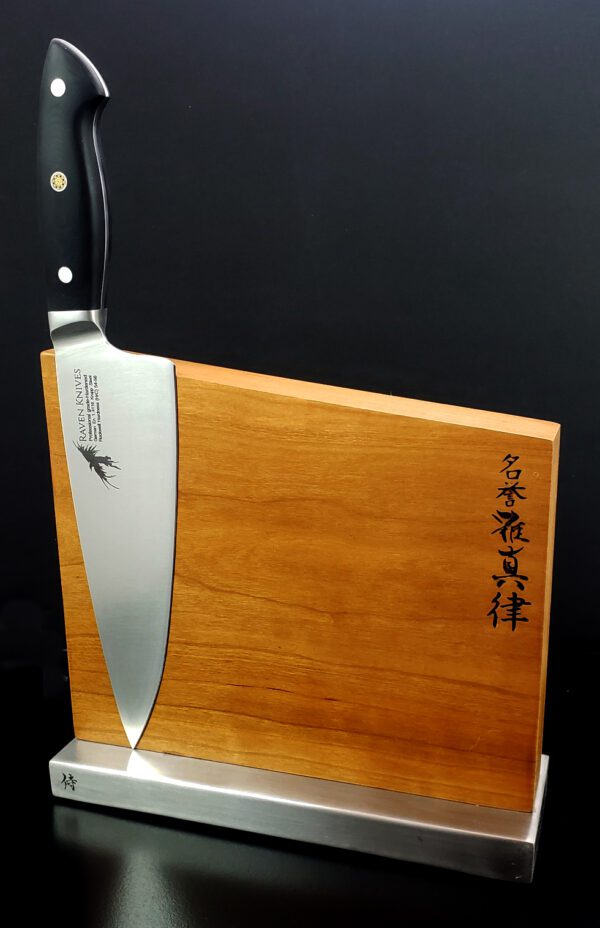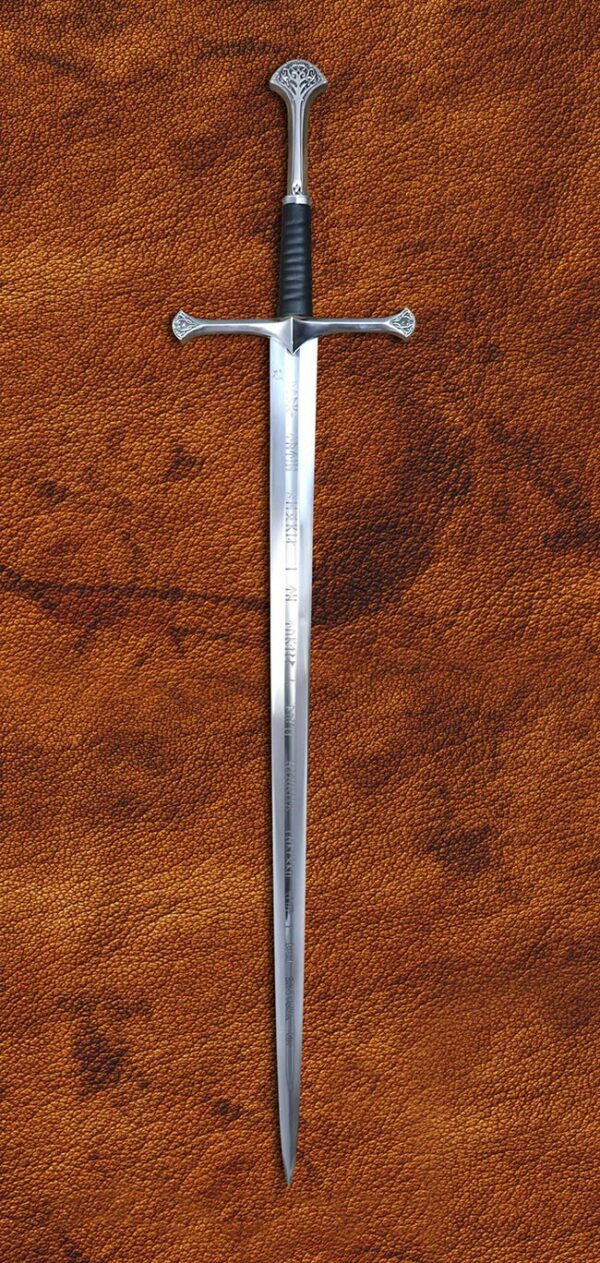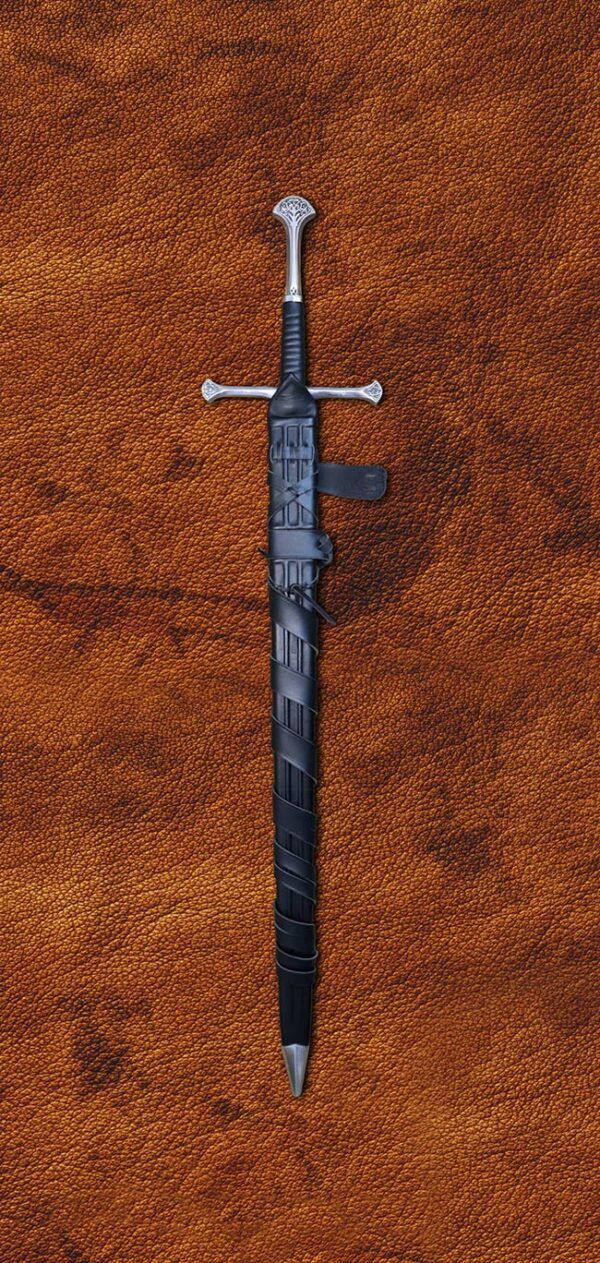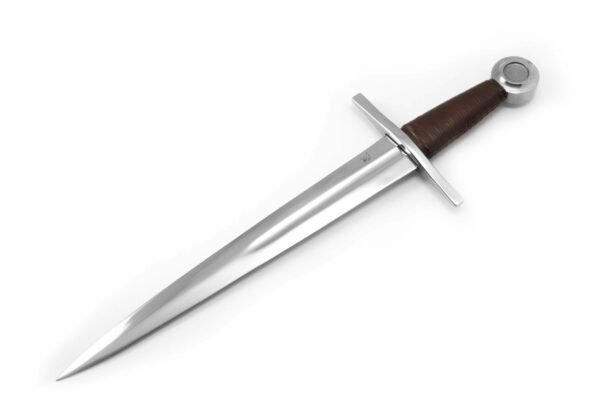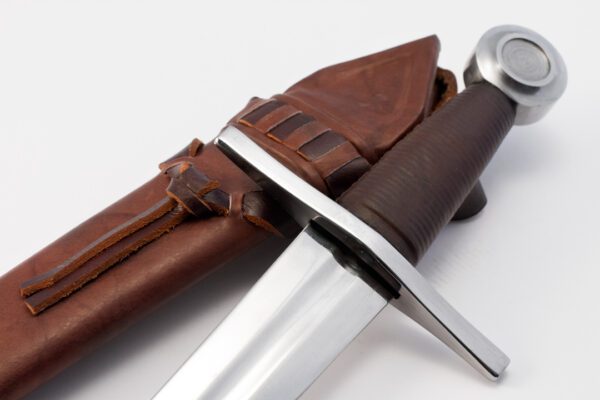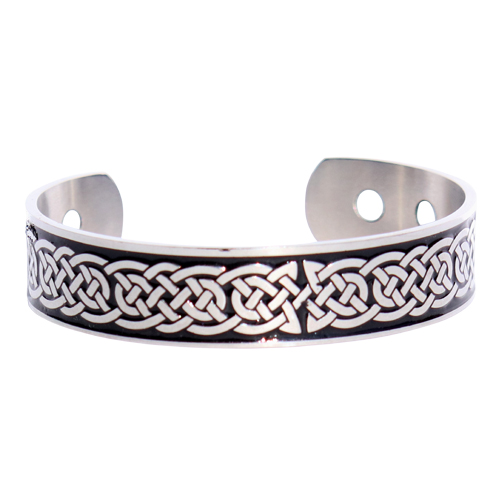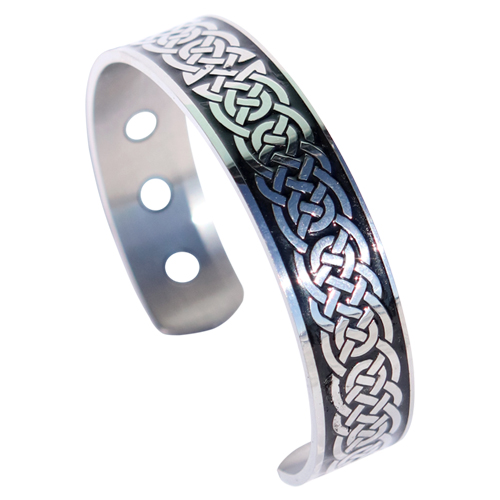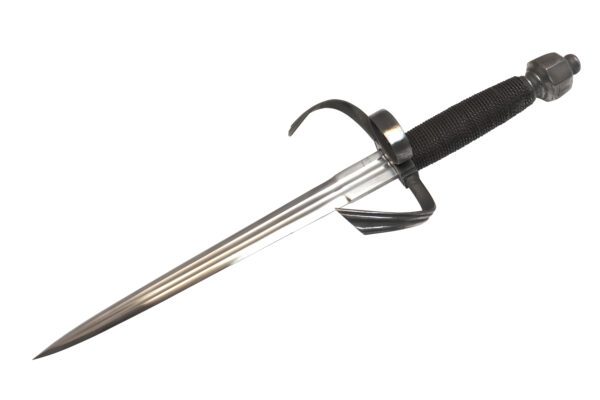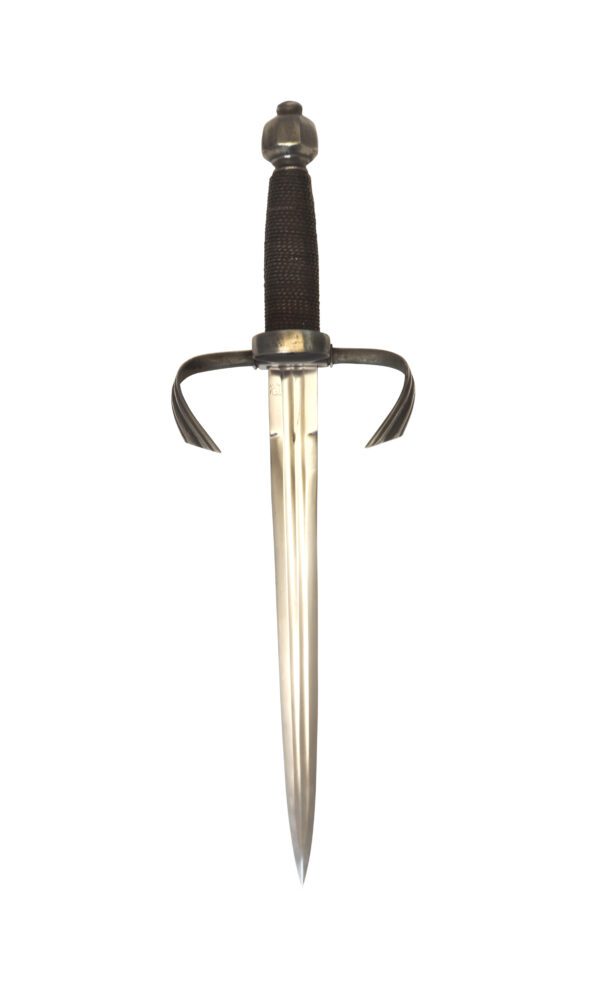The Squire Medieval Dagger (#1824)

*NEW* This is our most recent dagger. We are currently taking pre-production orders. The first batch will be completed in January 2024.
The Squire dagger, companion to the Squire Sword, is designed with those apprentice knights in mind. A mid-length, double-edged blade crafted from tempered 5160 spring steel provides a durable and resilient striking edge. The blade has a 3/4 length fuller. The simple, curved guard sets this dagger apart from the standard cruciform hilt sword, and the wheel pommel is a classic design. What sets this dagger apart, is its handling. Weighing 1 lbs, the Squire is a startlingly fast and responsive dagger. In the hands of a growing apprentice knight, the Squire would be a suitable training or combat weapon; in your hands, it would be a lively dagger that begs to be put through its paces.
Being specifically designed for close quarter combat, the Squire handles beautifully. It is a very responsive sword that feels “alive” and light in the hand. Easily wieldable even in novice hands, the Squire dagger’s characteristics make it a medieval weapon of choice for all collectors. The dagger is perfectly balance for swift movement and powerful delivery in both cut and thrust motions.
While historically made for the noble elites, the Squire is perfect for beginner and advanced students of the sword. The Crusader dagger is a light, responsive and enjoyable dagger to handle while being resilient enough to withstand actual use in combat.
Specs
5160 High Carbon Steel
Dual hardened tempered to a Rockwell of 53
Total length: 17″
Blade length: 12″
Handle length: 3 1/4″
Blade width at base: 1 1/2″
Weight: 1lbs 0oz
381.07 CAD – 402.64 CAD

The process of becoming a knight has been depicted in fiction and pop culture many times. Most people in Western culture who have been exposed, even tangentially, to historical fiction are aware that a knight follows a code of honor, and may even know its name: Chivalry. Most people are probably aware that knights wear full plate armor to ride into battle or the joust. They would also be aware that knights we not born, but made, in a ceremony involving a sword being tapped on their shoulders – and some may even know that before knights undergo this ceremony, they are known as something else – squires.
The process to become a knight was this: a noble-born boy, younger than 10 years old, would be put into service learning manners, etiquette, art, weapons, and about the essential duties of knights in society. At a certain age – usually 13 or 14 – the age would graduate to become a squire, or a knight-in-training. The squire would be apprenticed to a knight, and at this point their true training would begin. The squire would help the knight care for his armor, horse, and weapons, wait on their personal needs, and generally support them as staff on a daily basis. The knight, in turn, would train the squire in the arts of war needed to be an effective combatant on the battlefield. In fact, some squires would even accompany their knights into battle, defending them and learning to wage war in the most hands-on way possible. And, when they were ready, the squire would take his final step toward becoming a knight.
The Accolade – that holy ceremony in which a young man died to their old self and was “reborn” symbolically as a knight – was a revered coming-of-age ceremony in the Middle Ages. The ceremony itself was relatively simple: at the age of 21 a squire would undergo a ritual cleanse on the eve of his knighting ceremony, then stay awake the entire night in a prayer vigil. In the morning, the squire would take his vows of obedience to his lord and to the Church, and he would arise from his knees a knight. The knight would go on to act in service, to display courtesy to ladies, and to be a force for good in the world for decades to come (at least, this was the ideal). As long as the knight was alive, though, he would always remember the squire he had once been.
The Squire dagger, companion to the Squire Sword, is designed with those apprentice knights in mind. A mid-length, double-edged blade crafted from tempered 5160 spring steel provides a durable and resilient striking edge. The blade has a 3/4 length fuller. The simple, curved guard sets this dagger apart from the standard cruciform hilt sword, and the wheel pommel is a classic design. What sets this dagger apart, is its handling. Weighing 1 lbs, the Squire is a startlingly fast and responsive dagger. In the hands of a growing apprentice knight, the Squire would be a suitable training or combat weapon; in your hands, it would be a lively dagger that begs to be put through its paces.
Being specifically designed for close quarter combat, the Squire handles beautifully. It is a very responsive sword that feels “alive” and light in the hand. Easily wieldable even in novice hands, the Squire dagger’s characteristics make it a medieval weapon of choice for all collectors. The dagger is perfectly balance for swift movement and powerful delivery in both cut and thrust motions.
While historically made for the noble elites, the Squire is perfect for beginner and advanced students of the sword. The Crusader dagger is a light, responsive and enjoyable dagger to handle while being resilient enough to withstand actual use in combat.
Specs
5160 High Carbon Steel
Dual hardened tempered to a Rockwell of 53
Total length: 17″
Blade length: 12″
Handle length: 3 1/4″
Blade width at base: 1 1/2″
Weight: 1lbs 0oz
Related products
Medieval Daggers
Fantasy Swords
Medieval Daggers
Elite Series Damascus Steel Swords
Medieval Daggers
Epées Longues
Uncategorized
Fantasy Swords
Medieval Daggers
Medieval Daggers



